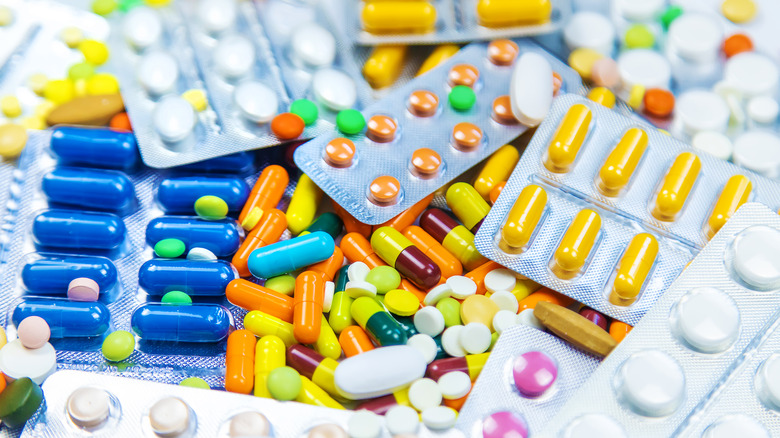How Do Substances Get Banned In The Olympics?
So we all know that athletes have to play fair, right? Skill and prowess only, no cheating, no artificial advantages, and no biochemical tampering. It makes sense that the World Anti-Doping Agency (WADA), which tests and monitors Olympic athletes before and during the Olympic games, is all about coming down hard on the juice. Their policies contain zero wiggle room; just ask former U.S. Olympic hopeful and sprinter Sha'Carri Richardson. Prior to the 2020 games, as the CBC reports, she used pot to even out following the death of her mother; sure enough, she wasn't allowed to participate. Even two 18-year-old Nambian sprinters were banned from participation not for doping, but for "high natural testosterone levels" (also per the CBC).
All debates about the stringency of such rules aside, and the validity of including drugs like marijuana on WADA's banned substances list, WADA has generated a hugely enormous, very specific list of no-no drugs. Available in full on Athletic Integrity, the 2022 list includes anabolic agents, peptide hormones, hormone and metabolic modulators, beta-2 agonists, stimulants, narcotics, cannabinoids (like pot), glucocorticoids, and more. As Pharmacy Times reports, "An agent or method is considered prohibited on the WADA list if it meets two of three criteria," going on to quote WADA itself: "it has potential to enhance or enhances sport performance, it represents an actual or potential health risk to the athlete, or it violates the spirit of the sport."
So what's safe? As Pharmacy Times also says, in 2021 WADA monitored several items, including bupropion (for depression), phenylephrine (a nasal decongestant), caffeine (an acceptable stimulant), and nicotine.
Extremely strict and comprehensive measures
As Pharmacy Times states, substances fall into two categories: those that are unacceptable to use at any time (out-of-competition testing), and those that are banned during competition (in-competition testing). The World Anti-Doping Agency (WADA) lays down the law for what's permissible, but the International Testing Agency (ITA) collects the actual urine samples. Anti-doping preparation for the Beijing 2022 Winter Games alone consisted of ITA specialists collaborating with officials from a bunch of International Olympic Winter Federations (IFs) and National Anti-Doping Organizations (NADOs).
There are specific, detailed biochemical reasons why each substance is disallowed (via Live Science). Hormone and metabolic modulators, for instance, could benefit athletes by reducing the amount of cortisol (the body's primary stress hormone) in the blood. This could cause a runner, for example, to feel less "burn" in their muscles towards the end of a sprint. Not needing to push through such discomfort, the reasoning goes, would provide an athlete with an unfair advantage. Cannabinoids like marijuana similarly mask pain, while diuretics produce more urine and are therefore considered a red-flag "masking agent" that an athlete can use to hide the presence of substances in their body. The list goes on and on.
Every year, folks at WADA sit down and draft their list of banned substances and pass it along to various other agencies — simple as that. The full, 184-page 2021 World Anti-Doping Code details their philosophy, testing procedures, reporting methods, and recommended legal measures in case of violations.

